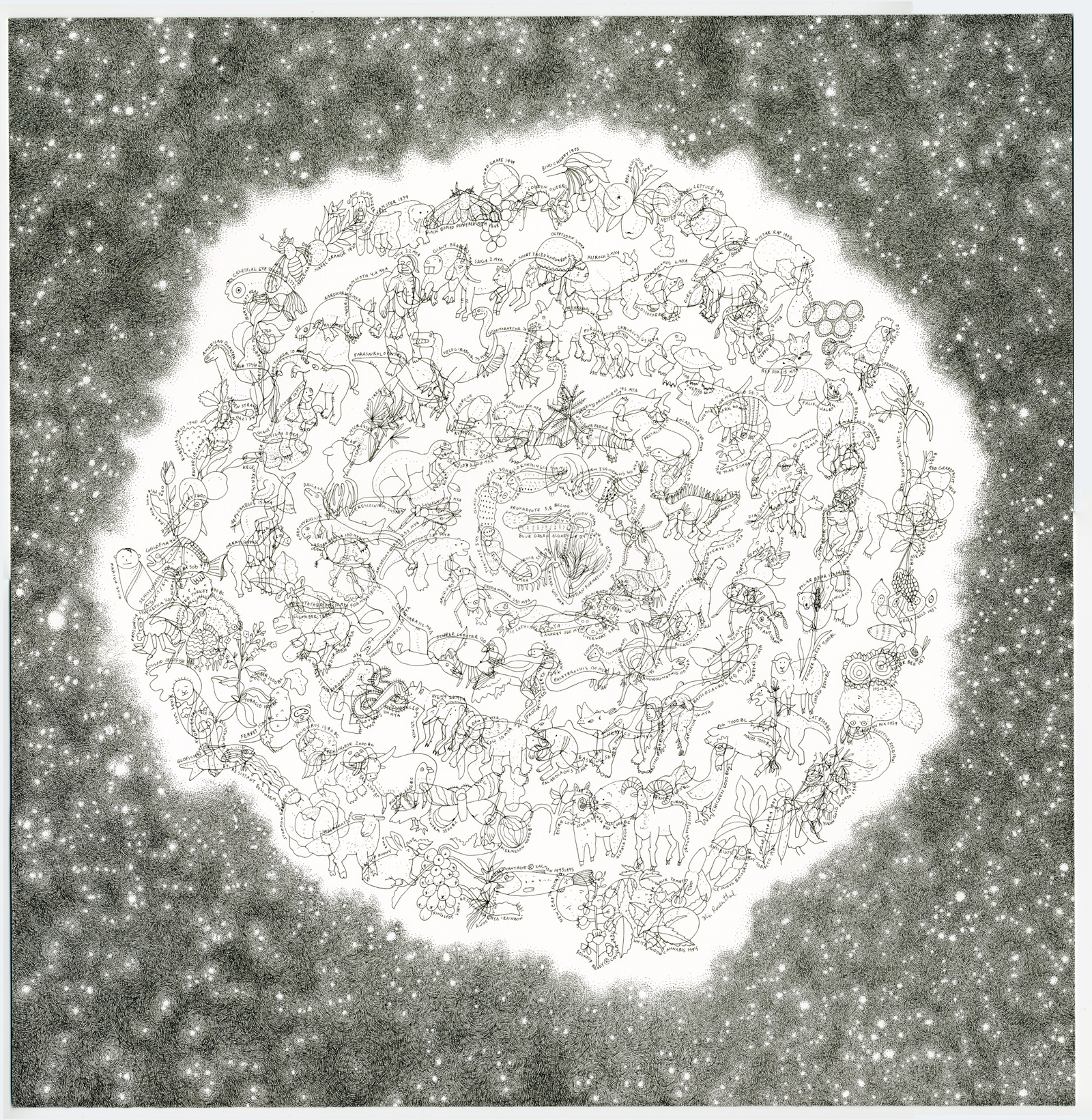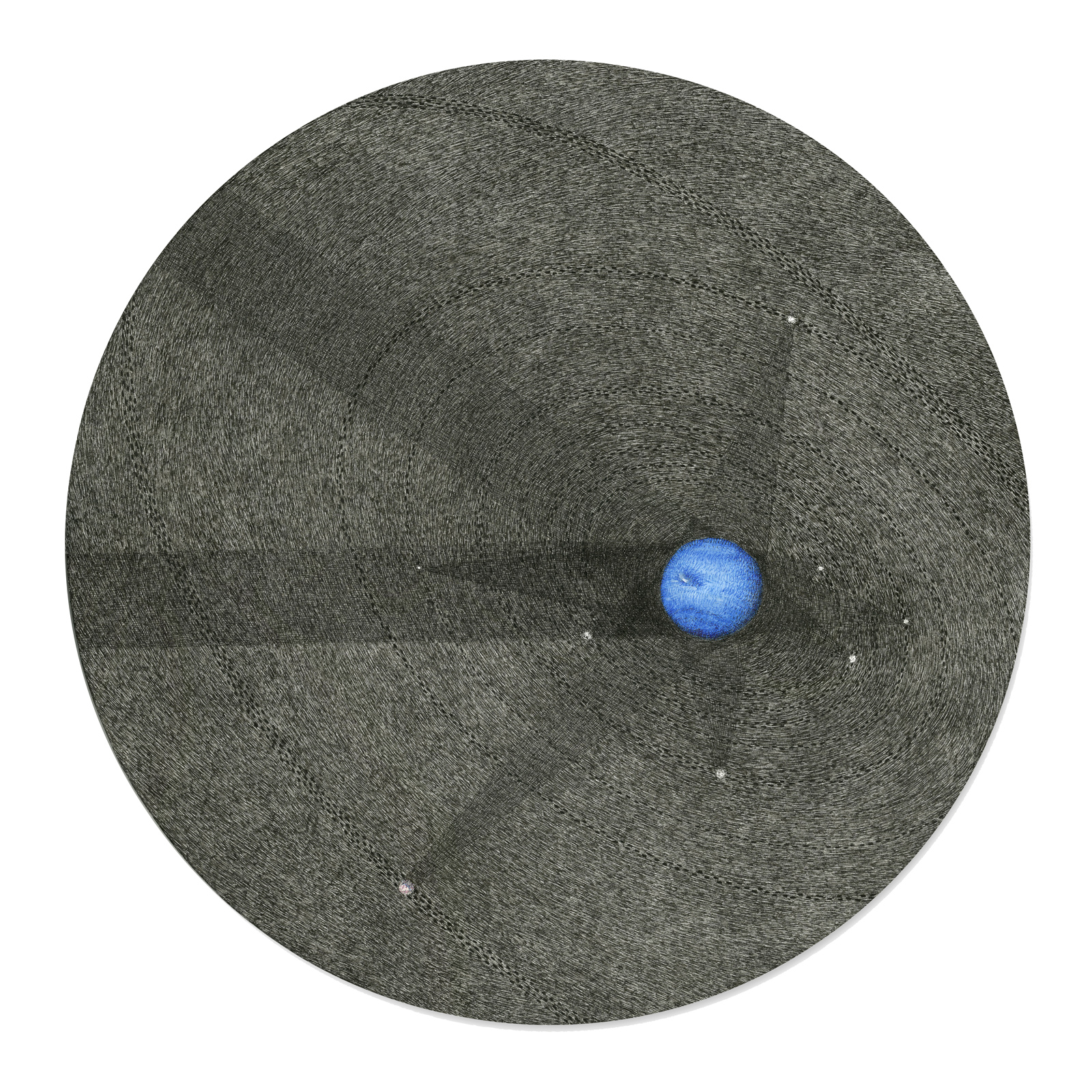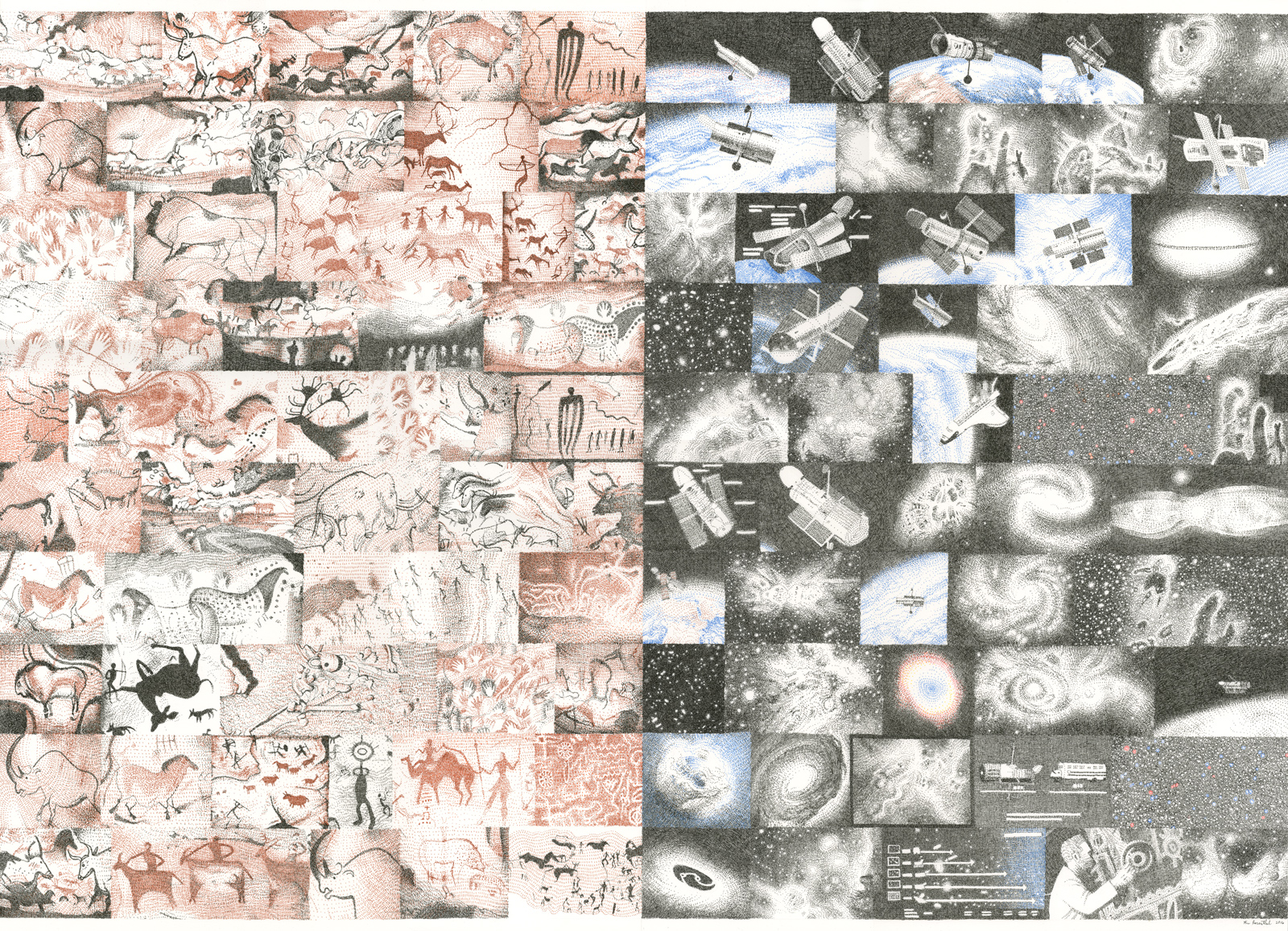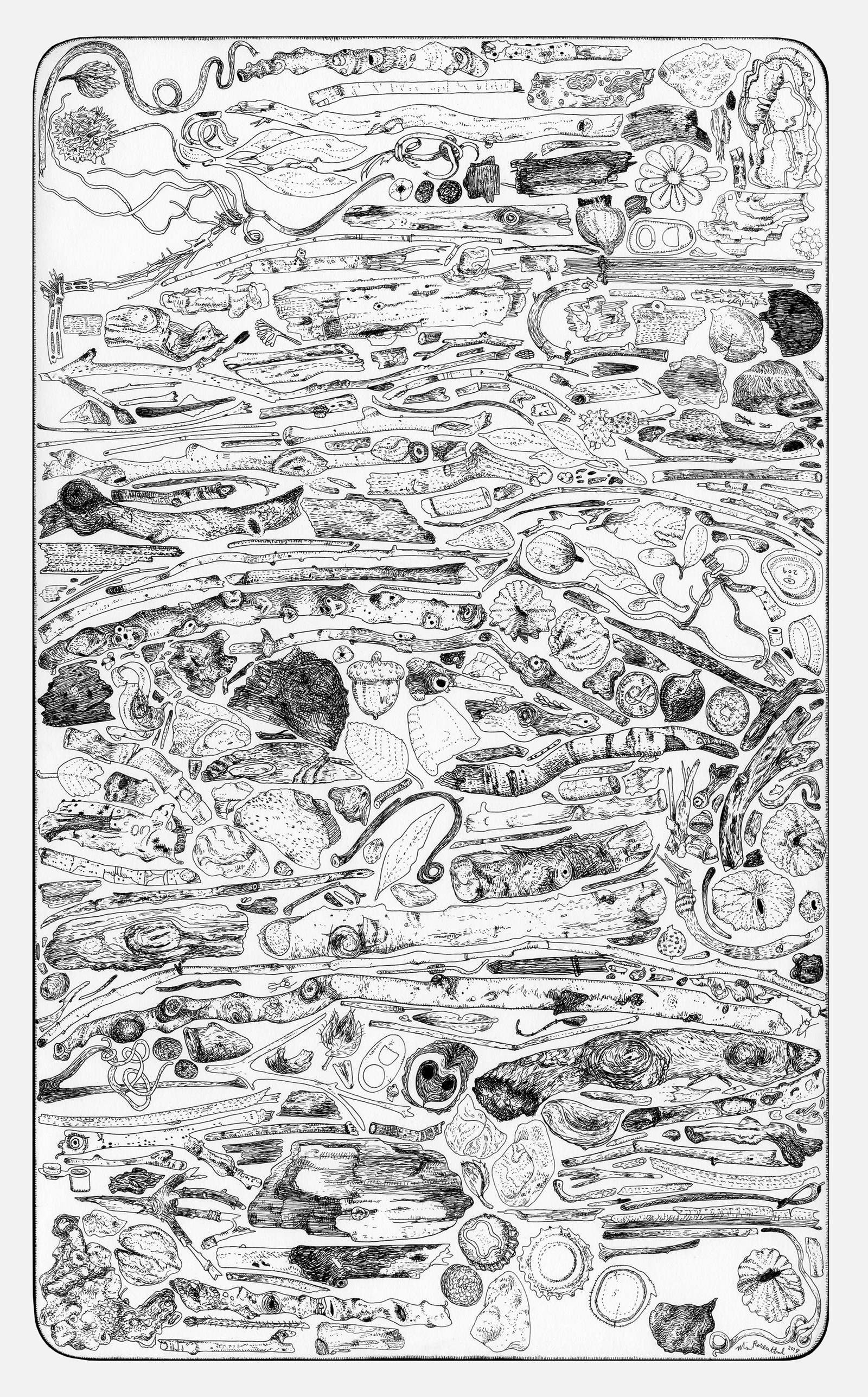ART REVIEW: Investigating human observation in Mia Rosenthal’s “Earth, sky, past, present” at Gallery Land Collective
 |
| Life on Earth, 2015–2018. 20 x 19 3⁄4 inches. Ink on paper. Courtesy of the artist + Gallery Joe |
Mia Rosenthal’s exhibition Earth, sky, present, past, is small and modest but enormous in scope. In just eight ink drawings, she explores humanity’s habits of observing the world around us — earth and sky — using drawing as a way to order and grasp at understanding and see connections between our present and the past.
The first three works present a celestial model of understanding the world, referencing how humans have always looked to the stars and the sky in order to understand their place in the universe.
“Life on Earth” presents a cluster of carefully-labeled Earth species circling in a spiral, connected to each other, on a bright gaseous planet or star surrounded by tiny points of light in a roiling gray sky. Looking closer at this tondo-like piece, you see the incredible detail and craftsmanship at Rosenthal’s command: each plant and animal is rendered in thin black ink, while the hatched and stippled sky surrounding them must be the result of infinite patience and faith in one’s steady hand. Rosenthal jumbles together the past and present, placing dinosaurs and prehistoric mammals right alongside recognizable pigeons and sheep, allowing us to take in the grand sweep of evolution and history in a single glance.
 |
| Gravitons: Neptune and Moons, 2015. 16 inch diameter circle. Ink on paper mounted to panel. From the collection of DAVID RUBIN Land Collective |
Pointing to our search for answers as a technological one, Rosenthal focuses on the human in “Google Portrait of Frederic Edwin Church.” The grid of thumbnail drawings presents Church’s famous landscape paintings as tiny adjacent squares and rectangles, all rendered in impossibly minute strokes of ink. While useful, few things look as banal as a page of search-engine image results, but Rosenthal makes them beautiful. Beside “Frederic Edwin Church” is a two-sectioned drawing, neatly divided in half left and right, but with both on the same sheet of paper. “Google Portrait: Paleolithic Cave Painting/Hubble Telescope” presents on the left the horses of the cave paintings of Lascaux as one small drawing after another in a crowded grid of search engine results. Paired with the overwhelming grid of cave painting thumbnails, the right side image of the sky seen through the Hubble Telescope is positively holistic and calming. Is the artist suggesting that you sacrifice the whole for an infinite number of parts, or, in other words, miss the forest for the trees?
 |
| Google Portrait: Paleolithic Cave Painting/Hubble Telescope, 2016. 25 3⁄4 x 36 inches. Ink on paper. Courtesy of the artist + Gallery Joe |
While some of the works in the exhibit deal with macro, big picture issues, some delve into the incredibly specific — like trash found in Philadelphia. We’ve traveled from looking at the sky through naked eyes, through a telescope, and into looking for answers with the internet: In three works rooted in the specific instead of the general, Rosenthal observes and draws the found objects in particular Philadelphia locations. The linework in “Found beneath the Septa Railroad Bridge,” “Found outside the Philadelphia Museum of Art (west steps, winter),” and “Found at Mt. Airy Playground” is bolder, more sustained, and less fuzzy than in the previous works, snapping the detritus at these three spots into perfect clarity. So what can we learn from the things Rosenthal found on the ground? “Septa Railroad Bridge” consists of mostly twigs and rocks–natural outdoor/landscape remnants–intermingled with the occasional Coke can opener tab, a flower hair clip, bottle caps. “Philadelphia Museum of Art” balances the natural and manufactured materials, juxtaposing large leaves with the museum’s small metal admission badges, while “Mt. Airy Playground” is more evidently cluttered with litter: amidst the gingko leaves are paper clips, keychains, a Barbie doll’s arm, a razor blade, and a repeat of the bottle caps and flower clips of the adjacent drawing.
 |
| Found beneath the Septa Railroad Bridge, 2018. 20 x 12 inches. Ink on paper mounted to panel. Created at Art in the Open 2018. Courtesy of the artist + Gallery Joe |
Everyone looks at the sky; many people use Google Images; some people enjoy cave paintings, but no one looks at the crap left on the ground. With the final three drawings, Rosenthal honors her home of Philadelphia, creating an orderly taxonomy of the things that no one looks at, devoting as much detail and attention to trash as to starry night skies.
Comments
Post a Comment